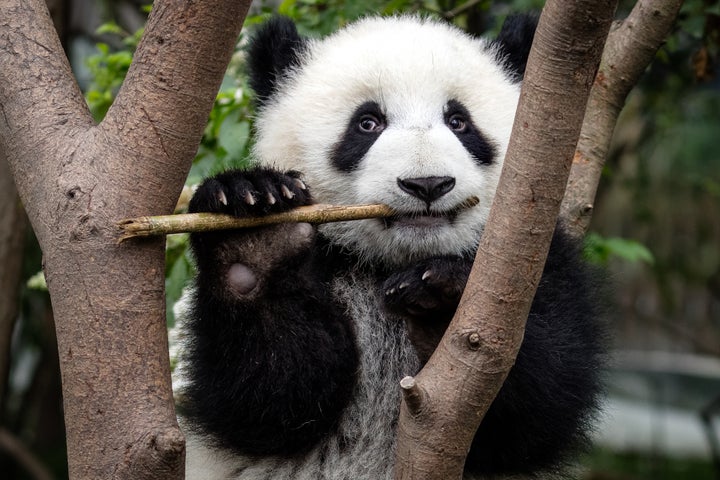
Giant pandas could be affected by climate change in the future.
When you think of climate change and wildlife, your mind probably turns to thoughts of corals bleaching, frogs going extinct or skinny polar bears trapped on land. I’d venture to guess that giant pandas don’t immediately come to mind. Though the International Union for Conservation of Nature (IUCN) recently downlisted the panda from ‘endangered’ to ‘vulnerable,’ the scientific literature out there suggests they may face some new challenges as our planet continues to warm.
As part of my work at World Wildlife Fund (WWF), I conduct assessments of species to find out how vulnerable they are to a changing climate. Some species, like polar bears, are extremely vulnerable because they depend almost entirely on the sea ice environment for traveling, hunting, mating and resting. Projections suggest that the Arctic could be ice-free in the summer by the middle of this century, which means big trouble for such ice-dependent species.
The biggest climate-driven threat to pandas, however, likely comes from humans. As China’s population has increased, pandas have moved to higher ground because their historic habitat was turned into farmland. But these higher mountain lands may not continue to provide pandas with the refuge they seek in the future. As the planet warms, land is becoming suitable for agriculture at higher elevations, which could lead to further human encroachment on panda habitat in the future.
Pandas, like monarch butterflies, are also vulnerable to climate change because they have a specialized diet. While monarchs crave milkweed, bamboo is the food of choice for our iconic black and white bear. And bamboo is a bit of a capricious plant. Entire bamboo forests will periodically flower and die off, forcing pandas to move on and find healthy bamboo. While that’s a natural cycle, it does mean that pandas need large swaths of connected bamboo forest to feed themselves. In the past, they’ve done this relatively easily, but as their habitat becomes more and more fragmented, it will become harder for pandas to relocate to new areas with healthy bamboo. With projected warming we may begin to see pandas shift their range to higher altitudes and latitudes. Bamboo however will struggle to keep pace. Being a plant with a slow colonization rate, it will take a lot longer to shift its range.
Pandas also have a small population size, low reproductive rate and long generation time, all of which contribute to what we call “low adaptive capacity,” much like mountain gorillas. This basically means that they have few characteristics which would allow them to rapidly evolve in response to changing environmental conditions.
That’s the bad news for pandas when it comes to climate change. The good news is that their overall population numbers are on the rise. To keep it this way, moving forward, we must factor climate change into our conservation strategies for pandas. This includes taking into consideration how the human communities living in and around panda habitat are being affected by climate change, and in turn, how that impacts this iconic animal. We also need to be more innovative in our thinking. For example, as we look to restore suitable panda habitat, we should consider using bamboo species or genotypes which are adapted to a warmer climate.
Only through a better understanding of the challenges our wildlife face, and how our own responses to a changing world affect them, will we be able to ensure our most iconic wildlife’s continued recovery far into the future.
